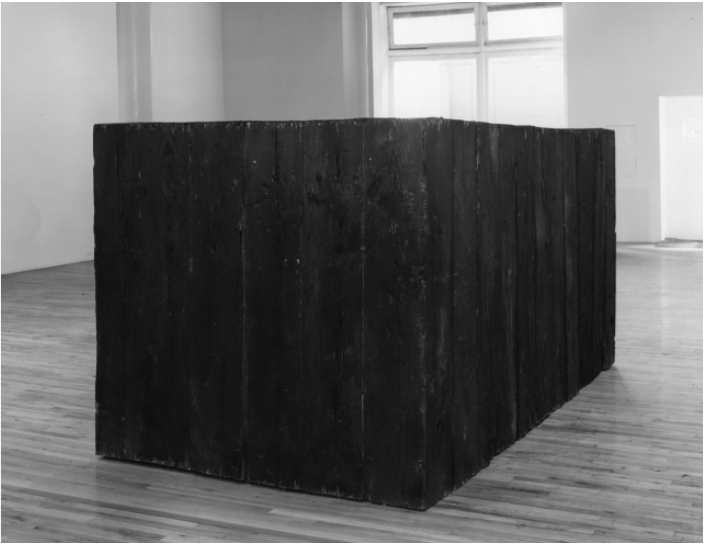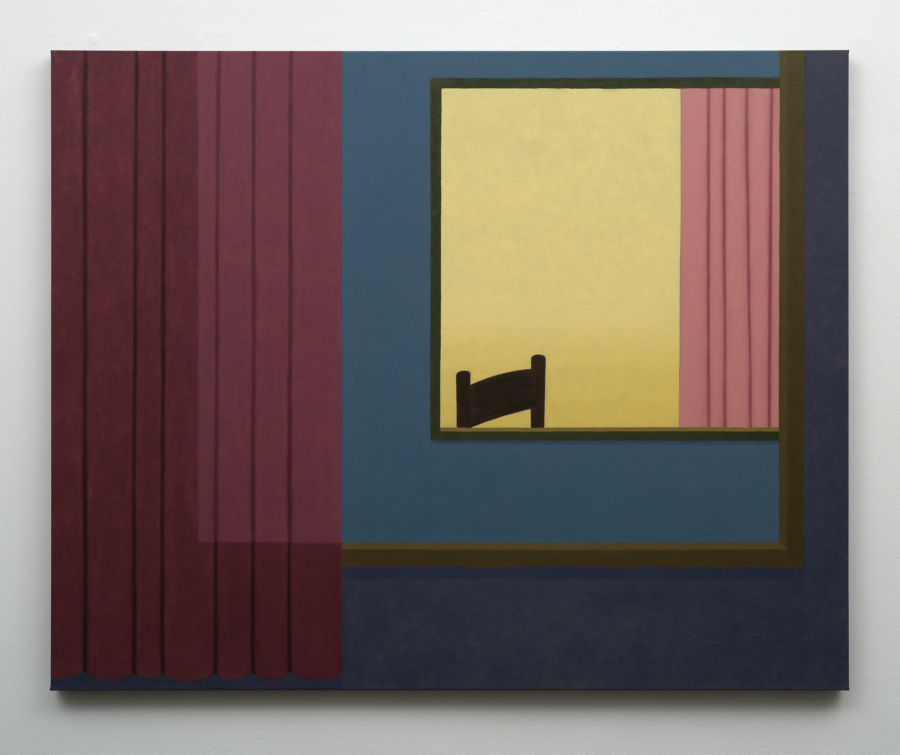Summer 1981
Download as PDF
View on Artforum

Robert Grosvenor, Untitled, 1980-81, pine and paint, 67 × 133 × 74 inches
Modern art proceeds by breaks: its history is a series of new premises rather than a long line of conclusions. Certainly earthworks signaled a new sculptural practice: so too did minimalist work by Donald Judd, Carl Andre and Robert Grosvenor. In a self-critical period (the ’60s, say) new premises develop and pass quickly; in a tolerant one (the ’70s) they rarely even come into focus. So it is unusual when an artist like Grosvenor is able to do important contemporary work based on an “old” mode.
The piece under review is neither a Judd-type of “specific object” nor a Robert Morris “gestalt.” An uneven block (human height) of rough wood beams, it is neither whole—the form will not stay fixed in the mind—nor nonreferential—it refers to trees, piers, the country, the city. It is a contradiction of metonyms. The piece hasn’t the presence of Minimal sculpture (i.e., one does not feel like the monkey before the monolith in 2001). Rather, its effect is one of sheer materialism, of a work of art absolutely given. As a structure whose material is bared, this piece provokes us to bare the material of other structures (social ones, for example). With Andre the materialism is often inert—the “givenness” does not engage. This is not the case here with Grosvenor.
One person’s materialism, Robert Smithson once said of Andre, is another person’s romanticism. Grosvenor is able to keep the two terms tense: one does not merely become the other, but rather they stand in contradiction, and that is the experience of the work. By romanticism I mean the desire to make a symbol-product that partakes of the natural and the cultural, that resolves, these two terms, so that even as the natural is transcended, the cultural is rendered natural. The desire really is to define the object in terms of the subject, in terms of mind, imagination. Materialism, of course, opposes this, as it does in the Grosvenor piece.
As a result, the opposition of natural and cultural, so crucial to the order of Western thought, is put into doubt. The terms are made unstable, made not opposites but accomplices. The beams in the piece are neither natural nor cultural but impurely a mixture of both. Once functional, they are not, as art is, entirely useless. So too they are treated (with enamel, I think, and grease) in a way that signifies endurance, not permanence, signifies a “life,” not a transcendence. The beams were found, it seems, in the unsure margin (e.g., old docks, modern ruins) between city and country, between architecture and landscape. Though made culturally central in the gallery, they do not violate cultural space (as much of the work of Michael Heizer, say, does). Whereas transgression reaffirms the natural/cultural line, contradiction makes us rethink it, and such is the case here. The ambiguity is really our own, too, and this no doubt is the presence of the work: though it denies any anthropomorphism, it inhabits the same uncertain space that we do.
—Hal Foster



